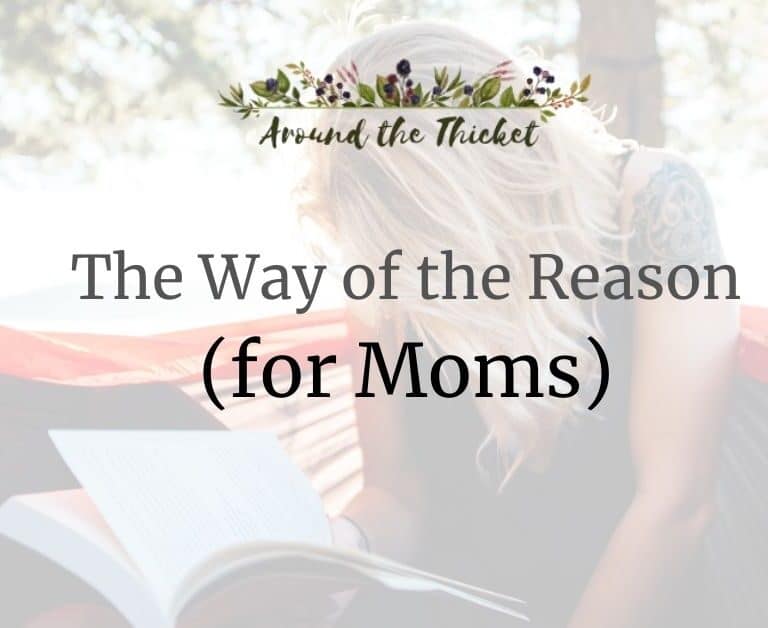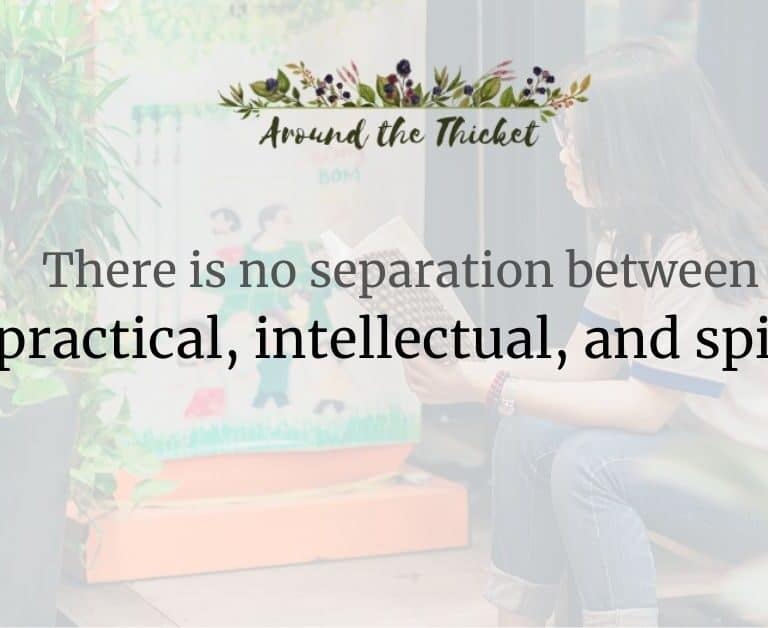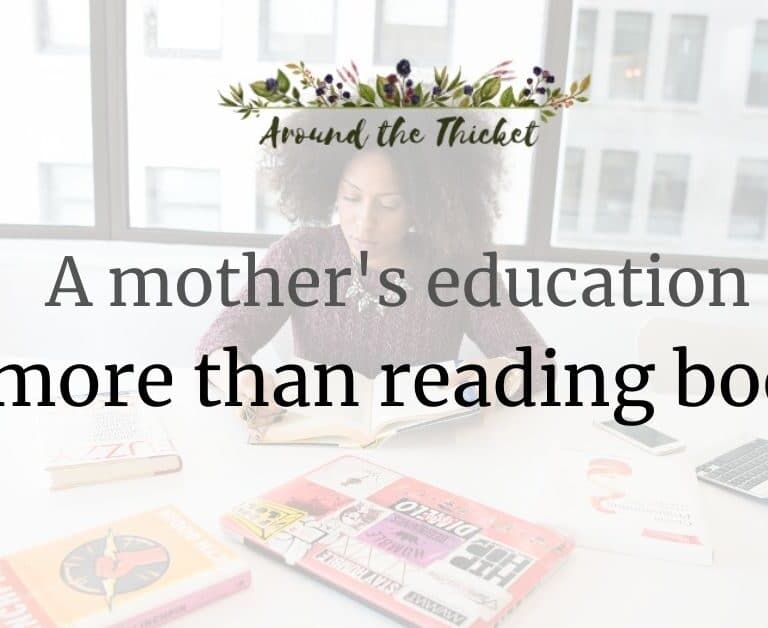To self-educate, mothers should narrate.
Once we have brought together a collection of living books that widen our interests, and have carved out a bit of time to read them, what do we do next? How can we engage with our reading in such a way that we are changed people when we put the book down?
These questions are essential. Reading is wonderful, but it is only one part of the equation. We must also make the knowledge our own and possess it for ourselves. We must go through a mental process in order to ‘digest’ our intellectual food. This mental process is contemplation. We need to consider and spend time with the ideas we encounter in our books. Otherwise, we are much too likely to let ideas go in one ear and out the other.
If spending time in contemplation and reflective thought sounds foreign or even a bit daunting (I know I struggle to hold a single thought in my mind for a length of time), Charlotte Mason gives us a simple, straightforward tool to help us take in and process the ideas we encounter: narration.
The Nuts and Bolts of Narration
Simply put, narration is the act of ‘telling back’ what you have heard or read. This retelling could be spoken or written, but it must use your own words. If you are home educating in line with the Charlotte Mason philosophy, narration is doubtless a key part of your lessons. Narration is how we assess our child’s comprehension of their lesson. It also helps our children remember the story over the long term.
The premise behind narration is simple: if we can tell it, then we know it. If we sincerely wish to grow through our time spent reading, then narration is one of the best tools in our box. Here are a few reasons why.
Narration requires receptivity.
When we plan to retell what we read, our posture towards the book changes. We may have opinions about the book, we may anticipate not agreeing or even liking it, but in order to retell, we have to set those thoughts aside. If we are busy forming our rebuttal, or thinking of our own opinions, we will not be able to tell back what is written, because we will not have listened.
Narration requires attention.
When we know we will need to narrate, we bring our attention to it in a bigger way than if we don’t think we’ll need to retell it. We have to quiet our inner voice and really focus on the the words. Charlotte Mason writes that attention is a habit – a muscle that can be strengthened with practice. It can be challenging to focus when we have disruptions and responsibilities, but every effort helps us to build up our capacity to pay attention.
Narration requires humility.
Ultimately, narration is about humbling ourselves. When we plan to quiet ourselves and to fully listen, we demonstrate that we genuinely want to listen and learn. When we give our full attention to something else, we are not thinking of ourselves at all. This self-forgetfulness is the essence of humility.

How to Narrate as a Mom
While narration might feel like a natural part of your homeschool day, it may take extra effort to include it as part of mother culture. It also takes time to build the skill of narration (which you may know from watching your kids narrate!).
Two simple ways to start narrating are to find someone to talk to about your book. I usually draft my husband into this! You could also share with a book club, a friend on Voxer or WhatsApp, or even talk to yourself.
You could also explore written narrations. A journal, kept on the computer or in a notebook, or a blog could be a place to store information. I’m experimenting with a ‘Book of Centuries’ – a timeline to help me keep track of people and events I encounter as I read. I’m also incorporating narration into my daily quiet times. I recently purchased an ESV Scripture Journal for the book of Hebrews (affiliate link). This little book has the Scripture printed on the left hand side and a lined page on the opposite side. Each day I read a few verses and write a narration on the other side. This is a super simple way to incorporate narration into my day.
Narration is not just for schoolchildren. As I said before, and as Charlotte Mason wrote, we don’t know something until we can tell or write about it. It is better to read a bit less each day and set aside a bit of time to properly absorb it.
Want to find your feet with the Charlotte Mason Way?

Grab my eight day mini course on the Charlotte Mason Essentials when you subscribe to my newsletter. You’ll get daily emails, a mini podcast series, and a printable workbook with reading assignments and action steps. You’ll be on your Charlotte Mason journey in no time!








